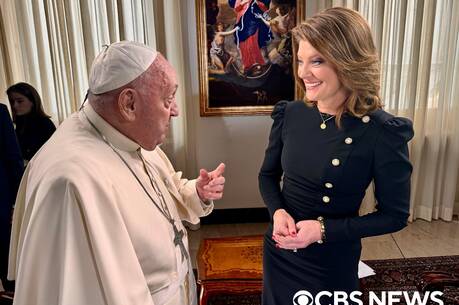The Weekly Dispatch takes a deep dive into breaking events and issues of significance around our world and our nation today, providing the background readers need to make better sense of the headlines speeding past us each week. For more news and analysis from around the world, visit Dispatches.
April 2 was Autism Awareness Day, an annual moment to acknowledge the estimated 75 million people on the autism spectrum around the world—5.4 million U.S. adults among them. (April is also Autism Acceptance Month.)
Here in the United States, one in every 36 children will be diagnosed with this lifelong neurological and behavioral distinctiveness. Autism Awareness Day not only helps people on the spectrum be seen; it also brings annual attention to social and cultural priorities to address their specific needs, many of which remain significantly underfunded.
Growing up on the spectrum comes with considerable educational, social and emotional obstacles for people with A.S.D. and their families. About 40 percent of children with A.S.D. are nonverbal, and 75 percent of adults on the spectrum have been unable to find employment.
This year’s observance of Autism Awareness Day is especially notable because of an entirely new arena of concern after a court decision in Canada crossed a regrettable, if predictable, redline. For the first time, a young woman—identified in court documents as “M.V.”—successfully applied to the Canadian medical establishment to proceed with medical assistance in dying based on her autism diagnosis.
In Canada, people ending their lives with the approval and assistance of the state now make up 4.1 percent of all deaths, and the system has been expanded to include otherwise healthy people who have not been able to find satisfactory treatment for psychological challenges. It has even come to include people with disabilities who have not been able to locate adequate housing.
M.V.’s father—identified as “W.V.”—had been suing to prevent his daughter’s death. Two doctors were approached in December to review M.V.’s medical-assistance-in-dying application. One agreed to sign off on the application; the other refused. It is the father’s belief that a third doctor M.V. turned to, who agreed to approve the application for her assisted death, “was not independent or objective” and that M.V. “is vulnerable and is not competent to make the decision to take her own life.”
According to Canadian media, the judge acknowledged the “profound grief” that W.V. would suffer because of the death of his child but ruled that M.V.’s assisted death could proceed.
“M.V.’s dignity and right to self-determination outweighs the important matters raised by W.V. and the harm that he will suffer in losing M.V.,” he wrote, concluding that “M.V.’s autonomy and dignity interests outweigh competing considerations.”
“The harm to M.V. if an injunction is granted goes to the core of her being,” he wrote. “The choice to live or die with dignity is MV’s alone to make.”
The judge did issue a 30-day stay of his decision so that the father can take the case to the Alberta Court of Appeal. M.V. lives with her father and was first approved for medical assistance in dying in December. Her attorney argued that W.V.’s love for his daughter “does not give him the right to keep her alive against her wishes.”
The case may break new ethical boundaries in Canada, but the notion of legally ending the life of a person solely because of an A.S.D. diagnosis is not completely new. State-sanctioned life termination has been legal in the Netherlands since 2001 (though it was practiced for many years before then). Most who choose to end their lives through the Dutch system suffer from terminal cancer, and six legal “due care” criteria are required to be met, including “unbearable suffering without prospect of improvement.”
But a British study published in May 2023 found that at least 39 people in the Netherlands had been approved for medically assisted death explicitly because of intellectual disability or an A.S.D. condition.
Those cases included five people younger than 30 who cited autism as either the only reason or a major contributing factor for euthanasia. The study reviewed just 929 cases of euthanasia in the Netherlands to locate the 39 deaths among people on the spectrum or intellectually disabled people. That means the true death count is likely much higher. Between 2012 and 2021, nearly 60,000 people were killed at their own request, according to the Dutch government’s euthanasia review committee.
The reasons for euthanasia and physician-assisted suicide cited in those 39 deaths included social isolation and loneliness (77 percent), lack of resilience or coping strategies (56 percent), lack of flexibility, that is, “rigid thinking or difficulty adapting to change” (44 percent) and “oversensitivity to stimuli” (26 percent). In other words, people sought to end their lives for pretty much all the “normal” issues that affect people with autism. Before teens and young adults on the spectrum turn to self-termination, are advanced societies like the Netherlands, Canada and elsewhere really saying the specific issues associated with growing up with autism are insurmountable?
Irene Tuffrey-Wijne is a palliative care specialist at Kingston University in London and one of the study’s authors. “There’s no doubt in my mind these people were suffering,” Ms. Tuffrey-Wijne said, assessing the report. “But is society really OK with sending this message, that there’s no other way to help them and it’s just better to be dead?”
Folks with loved ones on the spectrum may be especially horrified by such decisions, even as they no doubt would be the first to acknowledge the many challenges faced by young people with autism and the sometimes crushing loneliness and hopelessness they may experience. The world is not built for people with autism, nor is it particularly kind to them or willing to bend to the demands of their neurological distinctiveness.
Teens on the spectrum already are six times more likely than their peers to attempt suicide and twice as likely to succeed. Those suicides, of course, are treated in the United States as sources of regret and pain from all corners—at least for now. But with state-sanctioned self-termination justified by the inevitable life difficulties experienced because of autism in Canada and other nations, how long before children and teens begin to get the message? How long before they come to believe that is socially acceptable, perhaps even appropriate, for them to surrender to their despair and isolation and end their lives?
Most countries are already not doing enough to help people with autism become integrated into wider society. And as the number of children with autism continues to rise, personal and societal costs will mount. Whether the quiet part is ever spoken out loud, medically assisted “mercy” promises to be a huge cost-saver for the medical and social welfare system in Canada as its assisted termination program broadens.
Assuming just the insufficient status quo in social support is maintained, autism-related care could annually cost the United States up to $460 billion by 2025. How long before U.S. policymakers begin enviously eyeing all that cost-saving north of the border?
With reporting from The Associated Press
More from America
- A former convent gives adults with autism an independent living option in New York
- A Jesuit high school pilots a program for students with disabilities
- Medical assistance in dying can’t solve the problem of suffering. Canada’s system is a cautionary tale.
- A crisis in Canada: Medical assistance in dying is not what our most vulnerable people need.
- Canada’s euthanasia regime: How many more will die in the name of ‘compassion’?
- A crisis in Canada: Medical assistance in dying is not what our most vulnerable people need.
A Deeper Dive
- Fourth annual report on Medical Assistance in Dying in Canada 2022
- Euthanasia & Medical Aid in Dying (MAID) around the World
- Calgary judge rules 27-year-old can go ahead with MAID death despite father's concerns
- 2023 Community Report on Autism
- Brief Report: Forecasting the Economic Burden of Autism in 2015 and 2025 in the United States








